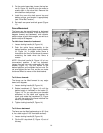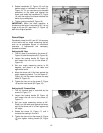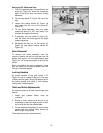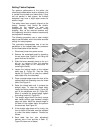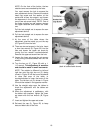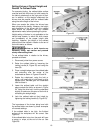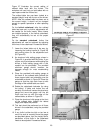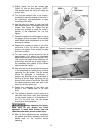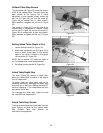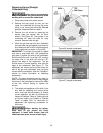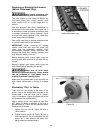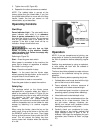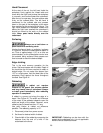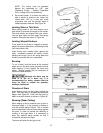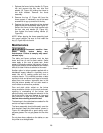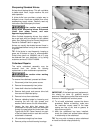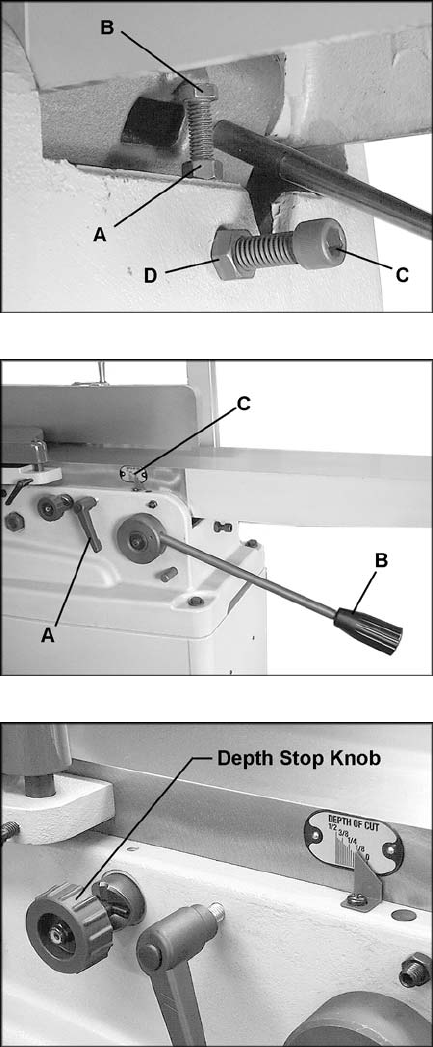
22
Outfeed Table Stop Screws
The stop screw (B, Figure 33) limits the amount
of fall of the outfeed table. The stop screw has
been pre-set at the factory, but if future
adjustment is ever needed, simply loosen the
hex nut (A, Figure 33) and turn the screw (B,
Figure 33) as needed with a 14mm wrench.
When satisfied, re-tighten the hex nut (A, Figure
33).
The screw (C, Figure 33) limits the rise of the
outfeed table. If adjustment is needed, loosen
the hex nut (D, Figure 33) and turn the screw (C,
Figure 33) as needed with a 9mm hex wrench.
When satisfied, re-tighten the hex nut (D, Figure
33).
Setting Infeed Table (Depth of Cut)
1. Loosen locking handle (A, Figure 34).
2. Move table adjustment arm (B, Figure 34) to
raise or lower infeed table to the desired
depth of cut, which is shown on the gauge
via the pointer (C, Figure 34).
NOTE: Do not exceed 1/8” maximum depth of
cut. For deeper cuts, make several passes.
3. Re-tighten locking handle (A, Figure 34).
Infeed Table Depth Stop
The knob (Figure 35) controls a depth stop.
When the infeed table is lowered, it will stop at
the 1/8” depth mark.
To further lower the infeed table, such as for
rabbeting operations, disengage the depth stop
by pulling out on the knob, rotating the knob 90°
and then releasing it. The infeed table can then
be lowered all the way.
To re-engage the depth stop, rotate the knob
90° until the knob snaps back in.
Infeed Table Stop Screws
The stop screws below the infeed table have the
same function as those for the outfeed table.
See “Outfeed Table Stop Screws” for
instructions on adjustment.
Figure 33
Figure 34
Figure 35



